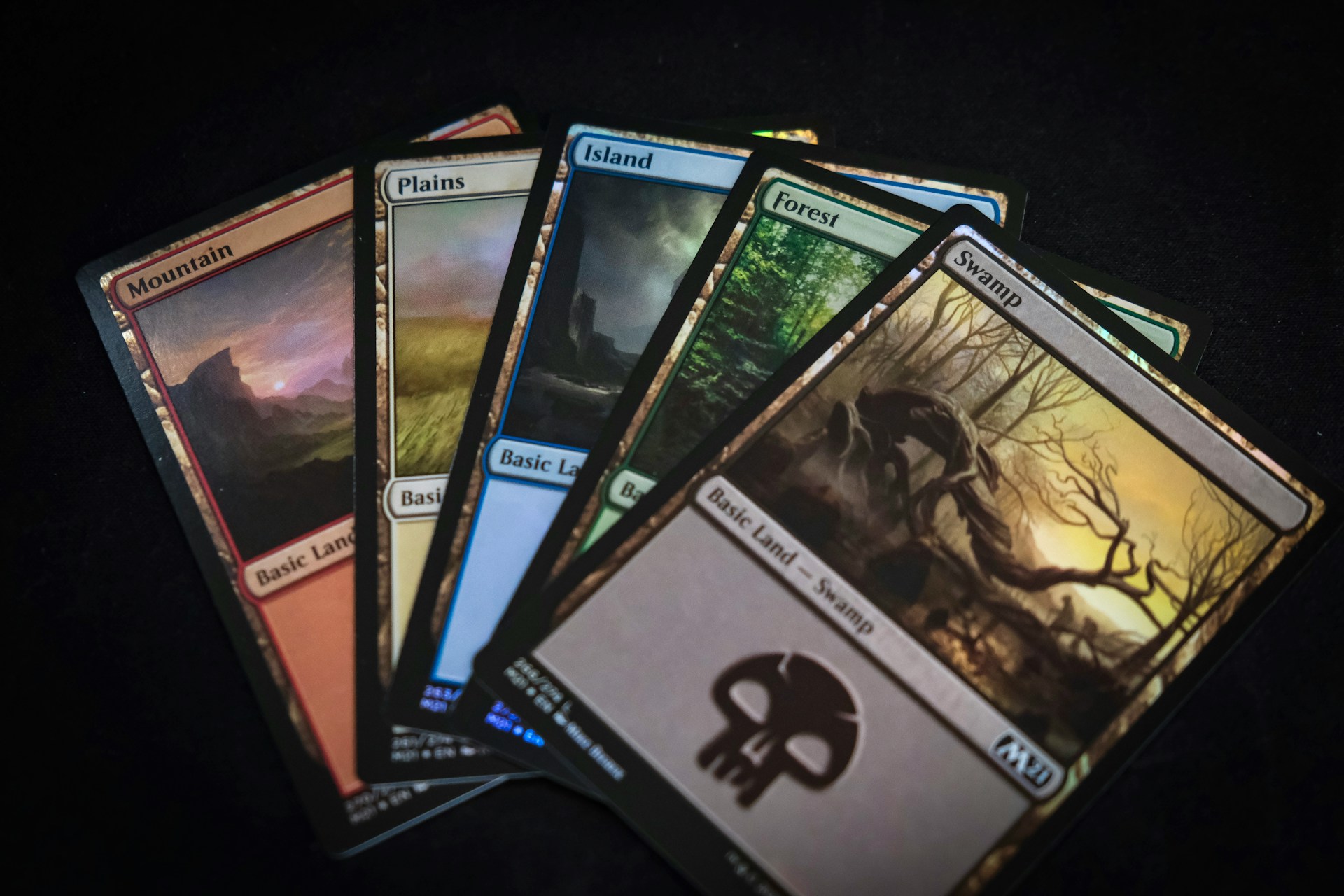Where to Start
There are multuple ways to get started with deckbuilding here are the top three that I use:
- Choose a commander.
- Choose a theme.
- (optional) Choose a card that inspires you or you want to build around.
- If you choose this third method, then your next step is to identify one of the first two methods to complement it.
Sometimes the theme is readily apparent with the card you’ve chosen, and otherwise it isn’t as easy to pinpoint.
Not Sure Where to Start?
If you don’t know where to begin and none of the three options above stand out, let’s use some tools to help your find your next commander!
The first tool I suggest would be EDHREC.com. They have a great Youtube channel with great content as well, but for the purposes of this post, we’ll focus on the website.
- If you prefer to build from the commander first, here’s a list of commanders ranked by popularity over the past two years: https://edhrec.com/commanders
- If you prefer to build from the theme or idea first, explore this list of themes and their associated commanders: https://edhrec.com/tags/themes
- You can also build by color pairings – whichever suits your fancy!
For a more advanced approach, Scryfall.com offers powerful search tools to help you find the right commander, especially if your already have a specific keyword or mechanic in mind.
Time to Start Building
Once you’ve selected a commander, it’s time to start building!
Where to Build
ome people prefer to build decks physically with cards in front of them, others use pen and paper, and many utilize online deck-building websites.
Archidekt.com & Moxfield.com are my prefered websites because they allow me to organize my deck categorically and include a playtesting feature.
Why use online deck-building tools?
- Track and update decks as you add or remove cards.
- Search within your collection to see which decks already house the same cards you might want to add to another deck.
- Playtest your deck before you physically build it.
Find the method that works best for you!
Lands First
A common situation for deckbuilders to find themselves when building a deck is ended up with 115 – 140 cards and then struggling to identify a way to cut down to 100. To avoid this struggle, start by putting a land base in first and then building up to 100 cards.
I reccommend starting every deck with 38 lands. This number can be adjusted later, but it gives you a strong foundations and statistically liklihood to hit your land drops early and consistently throughout the game.
You don’t want to fall behind!
When distributing lands during the initial build, spread them evenly across your commander’s color identity. For example, a three-color deck of red, white, and green, you may start the build with 12 mountains, 13 plains, and 13 forests. These numbers and ratios aren’t meant to be set in stone, but instead give you started point as you’re building the deck.
With your commander (1) + lands (38), you’ve already laid the foundation for 39% of your deck! I’ve found that this makes it easier to manage your remaining card slots.
Basic Outline
There are many ways to structure a Commander deck, but your playstyle, power level/desired bracket, and strategy will determine the final balance
A great starting point is The Command Zone Podcast’s 2025 deckbuilding template. Here’s their suggested breakdown:
- Lands: 38 – 45
- Ramp: 10
- Card Draw/Advantage: 12+
- Interaction/Single Target Removal: 12
- Mass Disruption: 6
- Including 2-3 boardwipes
- Synergy / Theme Specific: 30
This guideline isn’t absolute, but I’ve found it incredibly useful in making my decks more fun and effective right from the start.
Note: These numbers add up to more than 100 cards, but since some cards serve multiple roles (e.g., ramp + card draw), your final deck will feel cohesive and synergistic.
Now What?
Now comes the fun part—deckbuilding!
Choose cards that excite you and fit your theme. You can build within a budget, use cards from your collection, or include any Magic card ever printed. The choice is yours!
Refine Your Land Base
Now that you’ve completed the main elements of your deck and reached 100 cards, it’s time to review your land base and fine-tune the color distribution.
Instead of a strict one-for-one ratio of colors, consider how your deck functions in practice. Playtesting will help determine the right balance.
Key Considerations
- Early vs. Late Game Needs – Does your deck require specific colors early on, or are certain colors more crucial in the late game?
- Mana Curve & Colored Pips – Look at your overall mana curve and analyze how many colored pips (symbols) appear in your spells. This will guide how much of each color you need.
Final Phase – Playtesting
Once your deck is built, it’s time to test it. Playtest in paper or online using the tools mentioned earlier.
How to Playtest Efficiently:
- Use playtesting to refine your mulligan decisions (more on that in a future post!).
- Play through your first 6 turns to see if your deck is functioning as expected.
- Check whether your deck is “humming” by turns 5–6 (i.e., executing its strategy smoothly).
Final Thought
Nothing is set in stone once you’ve built your commander deck. Playtest, play games, have fun! You can always continue to build, upgrade, and altar your deck as you’ve been playing it.
Thanks for reading!
Want to see deckbuilding live and in action? Follow on https://www.twitch.tv/wheremagicgathers where we do deck reviews, deck building, and talk Magic: the Gathering!

